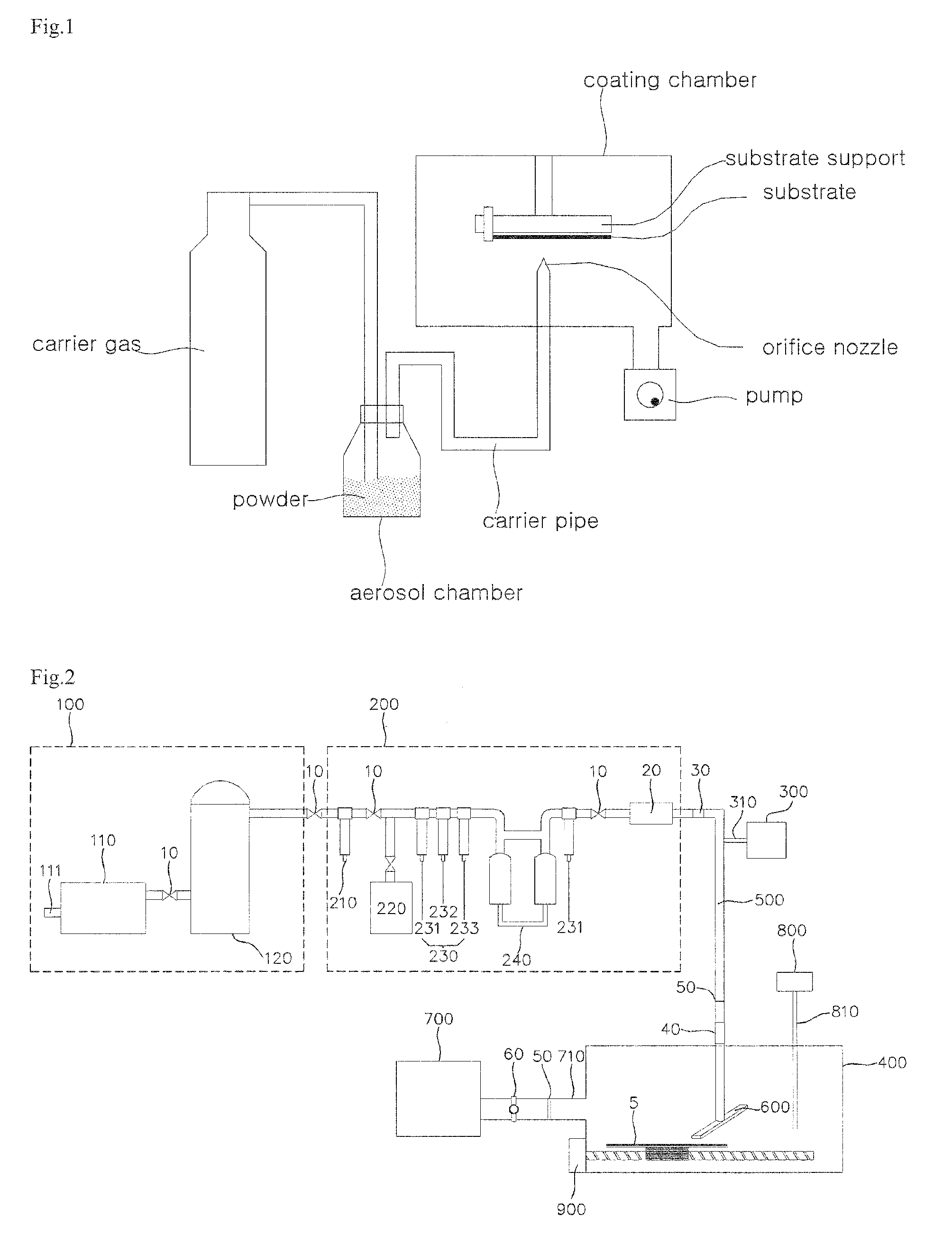Apparatus and method for continuous powder coating
a technology of apparatus and coating layer, applied in the direction of liquid spraying apparatus, coating, pressure inorganic powder coating, etc., can solve the problems of deteriorating chemical properties of powder, weakening the adhesion strength between the substrate and the coated layer, and difficult to control the thickness of the coated layer
- Summary
- Abstract
- Description
- Claims
- Application Information
AI Technical Summary
Benefits of technology
Problems solved by technology
Method used
Image
Examples
first embodiment
2. First Embodiment
[0238]As shown in [FIG. 7], the carrier pipe of the first embodiment is divided into the five sections such as a first section, a second section, a third section, a fourth section, and a fifth section. A pipe diameter of the first section, the third, and the fifth does not change, but the second and the fourth have a throat in the middle of a pipe and so a pipe diameter gradually scales down moving toward the throat from the ends of each section. The throat of the fourth section is bigger than it of the second section. The third section is connected to the feeder (300) by a connection pipe (310) and a block chamber (330) which has an open side (320) on its top.
[0239]As shown in [FIG. 6], powder at atmospheric pressure (P4) is fed into said carrier pipe (500) containing carrier air higher than atmospheric pressure (P1, P1′) as forming a specific section at minus pressure (P3) in the carrier pipe. For this feeding, the cross-sectional area of the carrier pipe in the...
second embodiment
3. Second Embodiment
[0274]The present invention provides an apparatus for powder feeding. It is composed of a spray nozzle that is connected to the end of the carrier pipe, one or several feeders that are connected to the second section of the carrier pipe through the powder pipe and have an open side on them, and the carrier pipe which consists of the first section that the diameter of the carrier pipe is uniform up to one point and converges at a certain ratio, the second section that the diameter of the pipe is uniform up to one point and then diverges at a certain ratio, and the third section that has the uniform diameter of the pipe.
[0275]In the present invention, powder (3) at atmospheric pressure is fed into the carrier pipe (500) as the minus pressure space is formed in the carrier pipe (500) as shown in [FIG. 13]. The carrier pipe, therefore, is divided into from the first section to the third section.
[0276]The first section is divided into two parts. The diameter of one pa...
PUM
| Property | Measurement | Unit |
|---|---|---|
| pressure | aaaaa | aaaaa |
| particle sizes | aaaaa | aaaaa |
| pressure | aaaaa | aaaaa |
Abstract
Description
Claims
Application Information
 Login to View More
Login to View More - R&D
- Intellectual Property
- Life Sciences
- Materials
- Tech Scout
- Unparalleled Data Quality
- Higher Quality Content
- 60% Fewer Hallucinations
Browse by: Latest US Patents, China's latest patents, Technical Efficacy Thesaurus, Application Domain, Technology Topic, Popular Technical Reports.
© 2025 PatSnap. All rights reserved.Legal|Privacy policy|Modern Slavery Act Transparency Statement|Sitemap|About US| Contact US: help@patsnap.com



